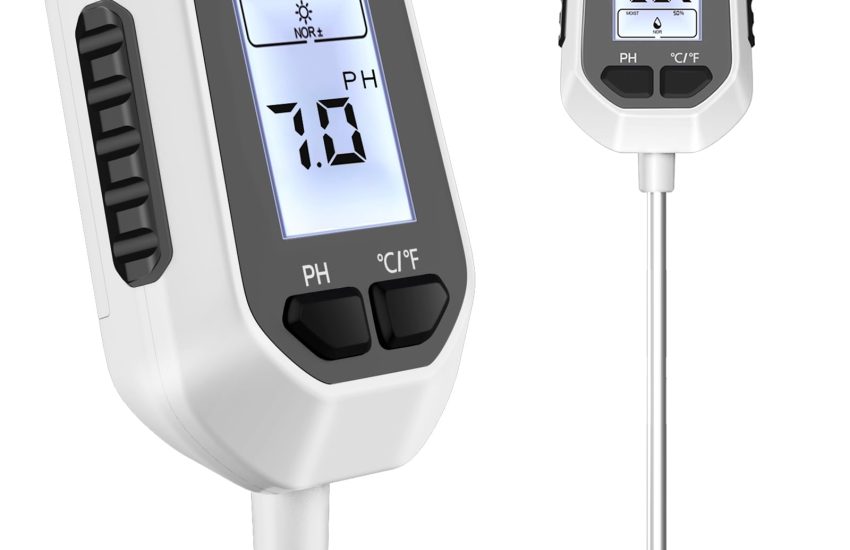Top 5 Picks: Essential Commercial Grow Light for High-Volume Production Efficiency and Reliability
We independently select all products and services. If you click through links we provide, Plant Native may earn a commission with no extra cost to you.
Commercial grow lights have become must-haves for sustainable indoor farming and high-volume plant production. They supply artificial light optimized for photosynthesis, so growers can manage intensity, timing, and spectrum.
This kind of control boosts both crop yield and quality, no matter what the weather’s doing outside. Commercial grow lights stand apart from smaller models because of their scale, toughness, and energy efficiency.
Manufacturers design these lights to cover big spaces with steady, reliable output. Many use full-spectrum LEDs or high-pressure sodium bulbs—tech that’s well-suited for greenhouses and vertical farms.
If you’re picking out commercial grow lights for a big operation, you’ve got to weigh a few key factors. Spectrum, energy use, heat output, and coverage area all play a role in plant growth and costs.
Durability and easy setup matter too, since these lights run pretty much nonstop. We tested a bunch of commercial grow lights to see which ones actually strike a good balance for large-scale growers.
Top 5 Picks: Essential Commercial Grow Light for High-volume Production
We narrowed it down to our favorite commercial grow lights for serious, high-volume growing. These picks stand out for durability, strong light output, and energy efficiency.
Spider Farmer G7000
A reliable and efficient grow light that balances power and control, perfect for high-volume indoor grows.
Pros
- Strong, uniform light coverage over large grow areas
- Smooth dimming with a clear digital display
- Convenient app control and daisy-chaining for scalability
Cons
- Noticeably heavy and bulky to install
- Generates quite a bit of heat during operation
- Digital knob can be fragile if pressed too hard
The Spider Farmer G7000 gave us steady, bright light across a 5×5 ft space, which is great for commercial setups or big tents. The six-bar design spreads light evenly, so you don’t get annoying dark spots, and the spectrum works for full-cycle growth.
It’s easy to tweak brightness with the digital panel, and the app lets you schedule and control multiple units remotely. That flexibility is a lifesaver when you’re juggling a big grow from different locations.
But, this thing is heavy and needs a secure mount. The heat output surprised us, so extra ventilation or cooling is a must to keep plants happy.
VIPARSPECTRA P4000 Grow Light
A solid pick for high-volume indoor growing with adjustable brightness and good energy efficiency.
Pros
- Smooth dimmer control for different growth stages
- Efficient heat dissipation without noisy fans
- Strong full-spectrum light mimics natural sunlight
Cons
- Can get warm at full power
- Requires proper height adjustment for best results
- Slightly heavier than some competitors
The dimmer made it easy to dial in just the right light for anything from seedlings to full bloom. The brightness is strong but not blinding, and the lack of a fan keeps things quiet.
Solid aluminum heat sinks kept the unit running cool for hours, which we really appreciated. Even at full blast, the warmth never became a dealbreaker.
Setup was a breeze thanks to the plug-and-play design. It slid right into our tent, no sweat.
MARS HYDRO FC-E8000 800W Grow Light
This grow light gives you strong coverage and efficiency—definitely a solid choice for commercial growers who want uniform plant development.
Pros
- High-efficiency LED output with excellent coverage
- Foldable design reduces setup time
- Precise dimming and daisy chain features for flexible control
Cons
- Consumes significant power, increasing electric costs
- Requires separate controller for smart features
- Emits noticeable heat that needs management
The foldable design saved us a ton of setup time compared to old-school fixtures. Light distribution was super even, so our canopy grew consistently across the board.
We liked being able to dim the lights and daisy chain up to 30 units—ideal for scaling up. The power draw is hefty, though, and the heat output meant we had to step up our ventilation game.
We added the smart controller via WiFi, which made remote monitoring and tweaks easier. For the price, it’s a strong performer for high-volume growing.
Phlizon FD9600 1000W Grow Light
This light brings strong, versatile coverage that works well for commercial growers who want adjustable intensity without a complicated setup.
Pros
- Dimmable with easy daisy chain linking up to 50 units
- Covers large grow areas efficiently in both veg and flower stages
- High LED count provides a broad, full spectrum including UV and IR
Cons
- Bulkier size can be challenging for smaller spaces
- Slightly less intense spectrum for flowering compared to other high-end models
- Runs warm at full power, requiring good ventilation
We ran the Phlizon FD9600 through different growth stages and found the daisy chain feature super handy. Adjusting one light dims them all, so scaling up is simple and you don’t need extra controllers.
Coverage was impressive—it filled a 7×7-foot area easily. The mix of UV and IR LEDs helped both veg and bloom, though for peak flowering, you might want a slightly stronger spectrum.
Installation was straightforward since it folds up and mounts on the ceiling. When you crank it to 100%, it does get warm, so make sure you’ve got airflow dialed in.
Mars Hydro TS 3000
This grow light delivers strong, steady coverage for big indoor grows and uses power efficiently.
Pros
- Wide and uniform light distribution ideal for both veg and bloom
- Dimmable with daisy chain feature for expandable setups
- Solid build with highly reflective hood boosting light intensity
Cons
- Occasional LED strip issues reported after extended use
- Power plug orientation could be more user-friendly
- At full power, light intensity may be too strong for seedlings
The Mars Hydro TS 3000 covered our 4×4 to 5×5 ft area evenly. Its unique diode layout kept output uniform, which really stood out when we ran different plant stages under one light.
The dimming function made it easy to adjust output for each crop, and the daisy chain setup saved us from a tangle of cords. We did wish the power plug was placed better, and a few users have reported LED issues after months of use.
Still, for the efficiency and strong output—delivering PPF like a 600W HPS but using less power—it’s a dependable pick for high-yield production.
Buying Guide
When you’re picking out a commercial grow light for high-volume production, efficiency and durability should come first. The light needs to cover your grow area well, but it also shouldn’t eat up electricity.
Finding that balance? That’s how you keep operations productive without blowing the budget.
Think about light intensity, spectrum, and energy use. Adjustable spectra help with different plant growth stages. High energy efficiency? That keeps operating costs down, which is a big deal in large-scale grows.
Heat management matters more than you might guess. Reliable cooling systems prevent overheating, which otherwise shortens the light’s life and can actually damage your plants.
Look for lights that are easy to install and play nicely with your current setup. No one wants a complicated headache when scaling up.
| Feature | Why It Matters | What to Look For |
|---|---|---|
| Light Intensity | Supports photosynthesis and growth rates | Adjustable PPFD (µmol/m²/s) |
| Spectrum | Affects plant development stages | Full spectrum or customizable settings |
| Energy Efficiency | Reduces power costs over long operation periods | High efficacy (µmol/J) |
| Heat Management | Maintains device lifespan and plant safety | Built-in fans or passive cooling |
| Durability & Warranty | Ensures long-term growth without frequent replacements | Sturdy build and at least 2-year warranty |
Make sure the grow light’s coverage matches your production scale. If the unit doesn’t fit your space, you’ll end up with patchy growth or wasted energy.
Honestly, it’s smart to dig into user reviews and see what kind of support the manufacturer offers. Reliability can’t be overstated.







